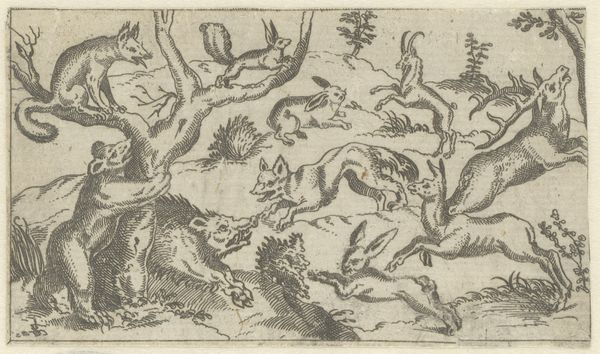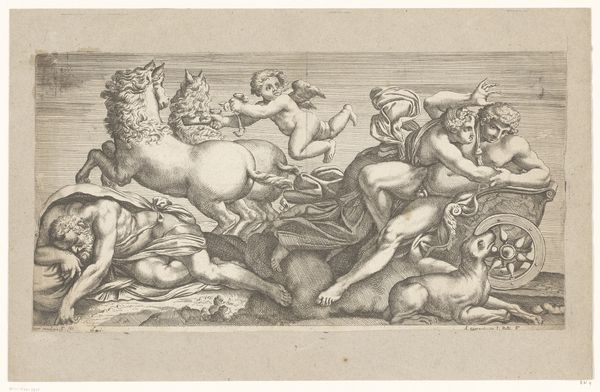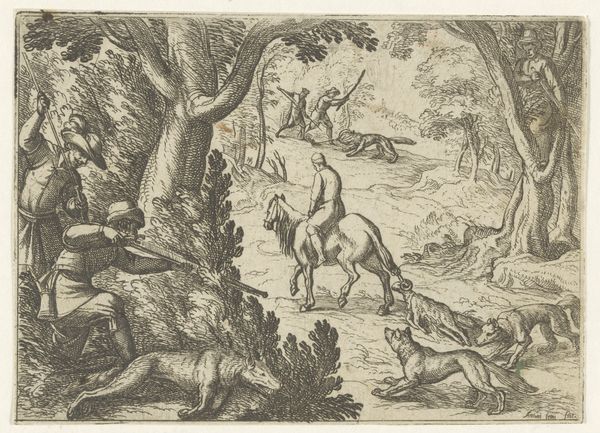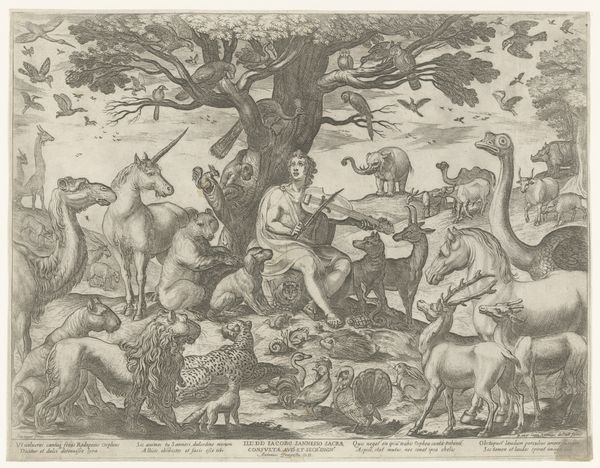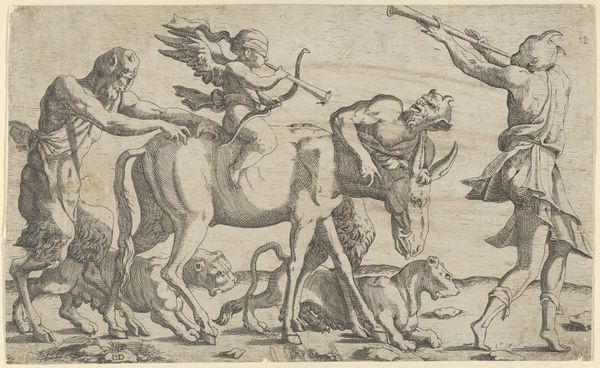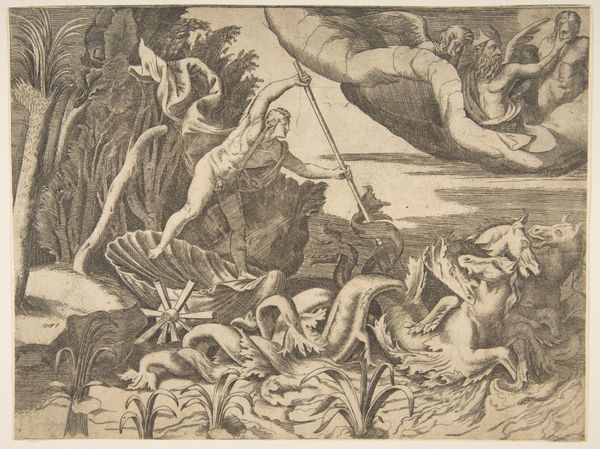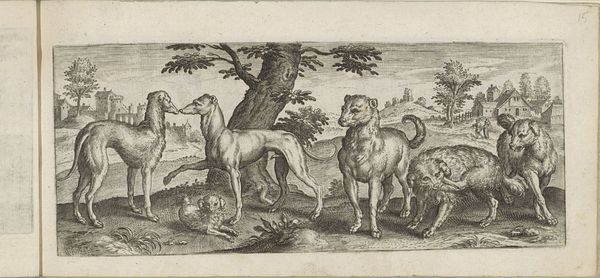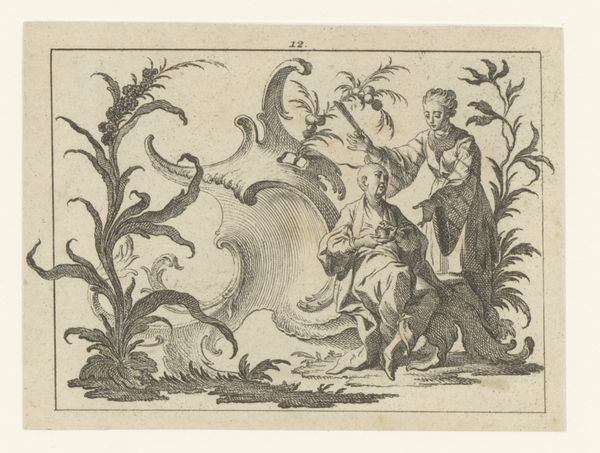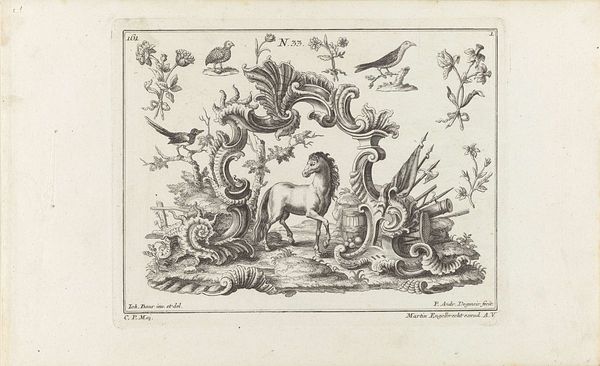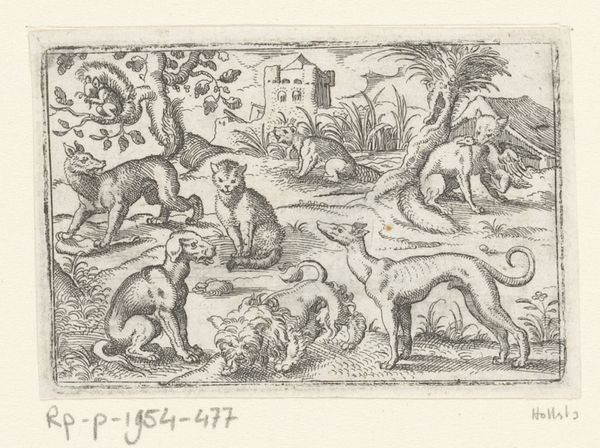
drawing, pen, engraving
#
drawing
#
pen drawing
#
pen sketch
#
fantasy-art
#
figuration
#
11_renaissance
#
horse
#
line
#
pen
#
engraving
Dimensions: height 60 mm, width 101 mm
Copyright: Rijks Museum: Open Domain
Curator: This pen drawing from around 1560-1620, attributed to Giacomo Franco, is called "Ornamentprent met dieren." The Rijksmuseum houses this interesting example of period art. What catches your eye about it? Editor: Chaos, mainly. It's a riot of creatures crammed into a small space. The textures, though—the cross-hatching really gives depth. What do you make of the gathering of beasts? Curator: It seems allegorical, doesn't it? We see recognizable creatures like an elephant and horses alongside griffins and unicorns. This juxtaposition wasn't just whimsical decoration. Each animal bore symbolic weight. Editor: Agreed. The way they're positioned also creates a visual rhythm. There's a dynamic contrast between the stillness of the elephant in the background and the leaping horses and dogs. It really enlivens the work. Curator: Precisely! Horses, for example, often represent nobility, speed, and even lust, while unicorns symbolize purity and grace. Combining them hints at deeper moral narratives popular during the Renaissance. Perhaps the tension and competition of earthly versus unearthly natures. Editor: Note also the composition’s deliberate roughness – sketchy outlines, and frenetic movement; I’m curious how this communicates those tensions for a 16th-century viewer. Are we supposed to read that energetic line as dynamism or conflict? Curator: That's a compelling point. Consider the function of "Ornamentprenten" – these ornamental prints disseminated ideas and stylistic trends. By embedding symbolism within an accessible art form, it made potent lessons easily digestible. It’s almost a cultural memory bank. Editor: It feels like a cabinet of curiosities flattened into two dimensions. The drawing creates this fascinating tension through layering the figures and using line density to achieve both depth and movement. Curator: Thank you, I had not considered its design as a predecessor to a 'cabinet of curiosities,' but I agree that its composition is similar. Seeing these interwoven perspectives definitely adds new layers to how we perceive these artworks. Editor: And it helps us to see just how much this little ornamental print encapsulates—an era's aesthetics, its stories, and its deeper yearnings.
Comments
No comments
Be the first to comment and join the conversation on the ultimate creative platform.


